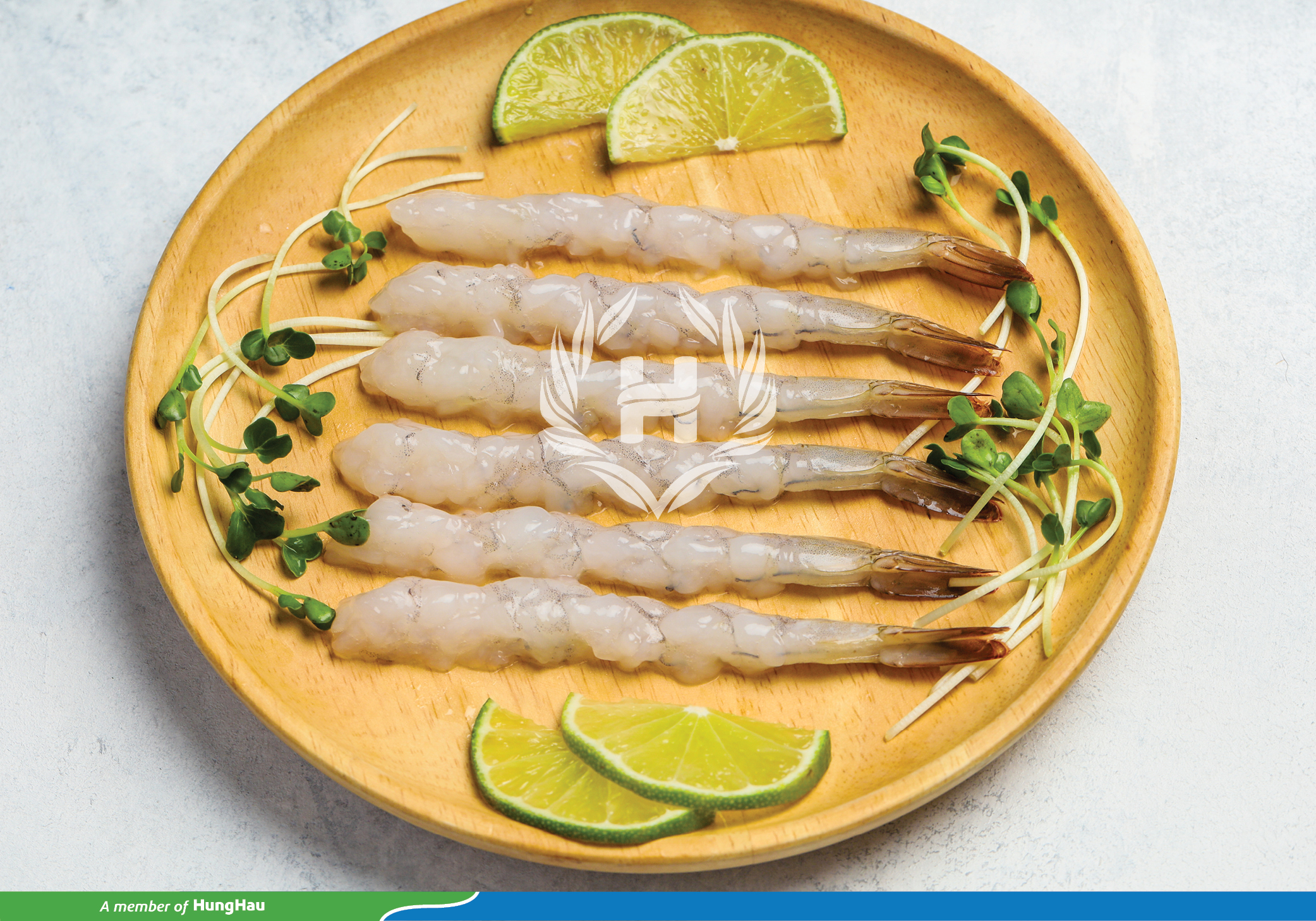Vietnam Seafood
Odious to compare prices of Vietnamese shrimp and Ecuadorian shrimp
1. Ecuador’s shrimp farm is tens of hectares at least, some are hundreds of hectares, one thousand hectares or even four thousand hectares, hence good output despite low density. If Vietnam applies such a low density into domestic shrimp farms, the fall in output is possible because the farming areas are too small; except for big businesses such as Minh Phú, Bim, and Trung Sơn as they own hundreds of hectares of farming areas. Thus, if they are willing to shift to a new culture model, they can apply a low density stocking method.
2. With the density of 20 individuals per m2, Ecuador can use low protein feed (35-28% of protein) as shrimp can absorb more natural feed in the ponds. Feed accounts for 50% of the production costs. Meanwhile, Vietnam’s shrimp farms are so small that shrimp must be stocked at a high density to produce a high output. And because of a high density, super feed must be used.
It’s not entirely true to suppose that feed accounts for 50% of the production costs, resulting in the fact that Vietnam costs more when using super feed. In 2016, I conducted a survey related to feed in India and Ecuador and realized that high protein feed helped shorten the farming cycle (Vietnamese shrimp reach 20g just after 80 days of stocking while it was 90-115 days in Ecuador and 110-130 days in India). A calculation conducted in the same size shrimp (20g) showed that the low protein feed and high stocking density in India pushed up the FCR much higher than the high protein feed. Thus, production costs on feed are not reduced but prolong the production cycle.

3. Most Vietnamese shrimp farmers lack capital and buy breeding stocks, feed and drugs on credit from multilevel agents. Large scale farms in Ecuador buy feed and drugs from feed processing factories and material companies or tier 1 agents but multilevel agents like in Vietnam. Low production costs, low stocking density, natural feed advantage, and a cutdown in costs for paddle-wheel aerators and workers are the reasons why Ecuador shrimp are sold at much cheaper prices than Vietnamese shrimp.
4. Indonesia’s shrimp farming models are similar to Vietnam’s. However, farmers here use low protein feed (35-38%) with a higher FCR than Vietnam, thus the difference in feed costs is not clear. The biggest difference is that Indonesia’s shrimp farms have at least 20 ponds and feed is bought from feed factories or tier 1 agents. Shrimp farms have many ponds and are invested with a large amount of money, thus farmers don’t have to buy on credit from multilevel agents like in Vietnam.
Increasing the survival rate to decrease production costs is not easy as a general strategy related to breeding stocks, feed, and farming models, training courses, and exchanges within the shrimp farming community are needed. For example, Ecuador has highly succeeded in breeding stocks because they reduce the risks of white spot syndrome virus in shrimp by generations of selective breeding through decades. What they did was pick resilient shrimp from infected ponds to nurse them into adult broodstocks. Thus shrimp lines of Ecuador have resistance against white spot syndrome virus. Meanwhile, Vietnam sees a low successful rate, mainly in earthen ponds, because biosafety requirements are failed and white spot syndrome pathogens are not killed. Vietnam’s shrimp farmers related to earthen ponds have to suffer from serious loss every year.
Besides, water pollution is a problem as the low-lying area in the Mekong Delta and the poor irrigation system fail to bring the wastage to the estuary and the ocean like in countries with high-lying area such as Indonesia. Small earthen ponds in Vietnam are not invested in terms of design, paddle-wheel aerators, and water treatment system, resulting in higher risks of pathogens than lined ponds and low success rate (<40%).
These are the reasons why production cost for shrimp culture in Vietnam is higher than in Ecuador. Thus, we shouldn’t compare Vietnam with another country of a different frame.

Temporary solutions:
- Focus on developing a complete earthen pond system from design, settling basin, water treatment system, biosafety method, and proper culturing model so as to build a highly successful earthen pond model.
- Provide farmers in small farms with training courses and transfer the successful earthen pond model to households working in a group.
- Households in the same group should work tightly to negotiate in buying breeding stocks, feed, and materials at low prices and offer loans for small teams in groups.
- Standardized conditions for unqualified pond liners are needed.
Overall and long-term strategy include:
- Import SPR breeding stocks and control the quality of breeding.
- Improve the water supply and drainage system in key shrimp farming areas.
- Map out a proper planning to determine suitable farming models in accordance with local natural advantages (lined pond, earthen pond, mangrove-shrimp model, and shrimp-rice model)
- Develop the farming areas and Cooperatives into value chains which together with loans will help negotiate the prices in buying breeding stocks and feed.
- Develop Centers of training and engineering courses in provinces where experts, good engineers, and successful shrimp households are invited to instruct, transfer knowledge and share experiences to local farmers.
(Source: https://vietfishmagazine.com/)



 Tiếng Việt
Tiếng Việt